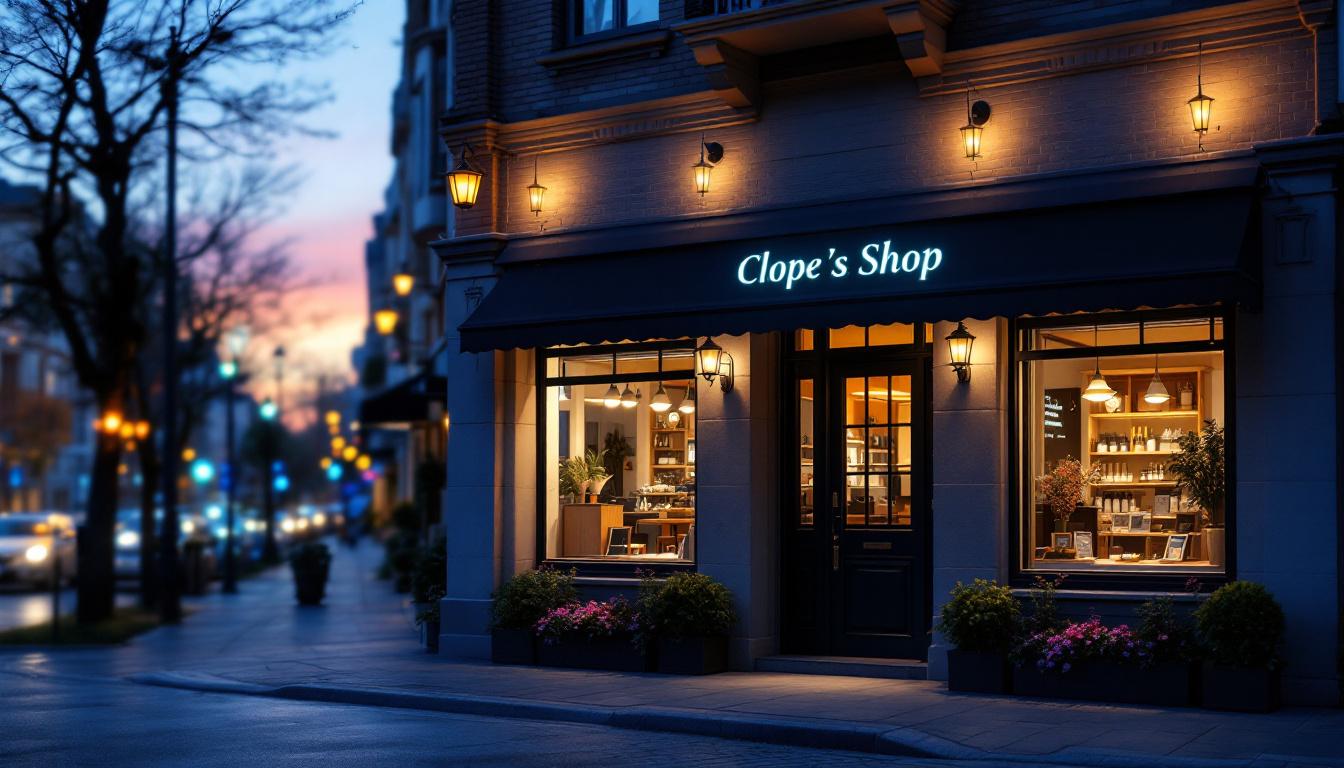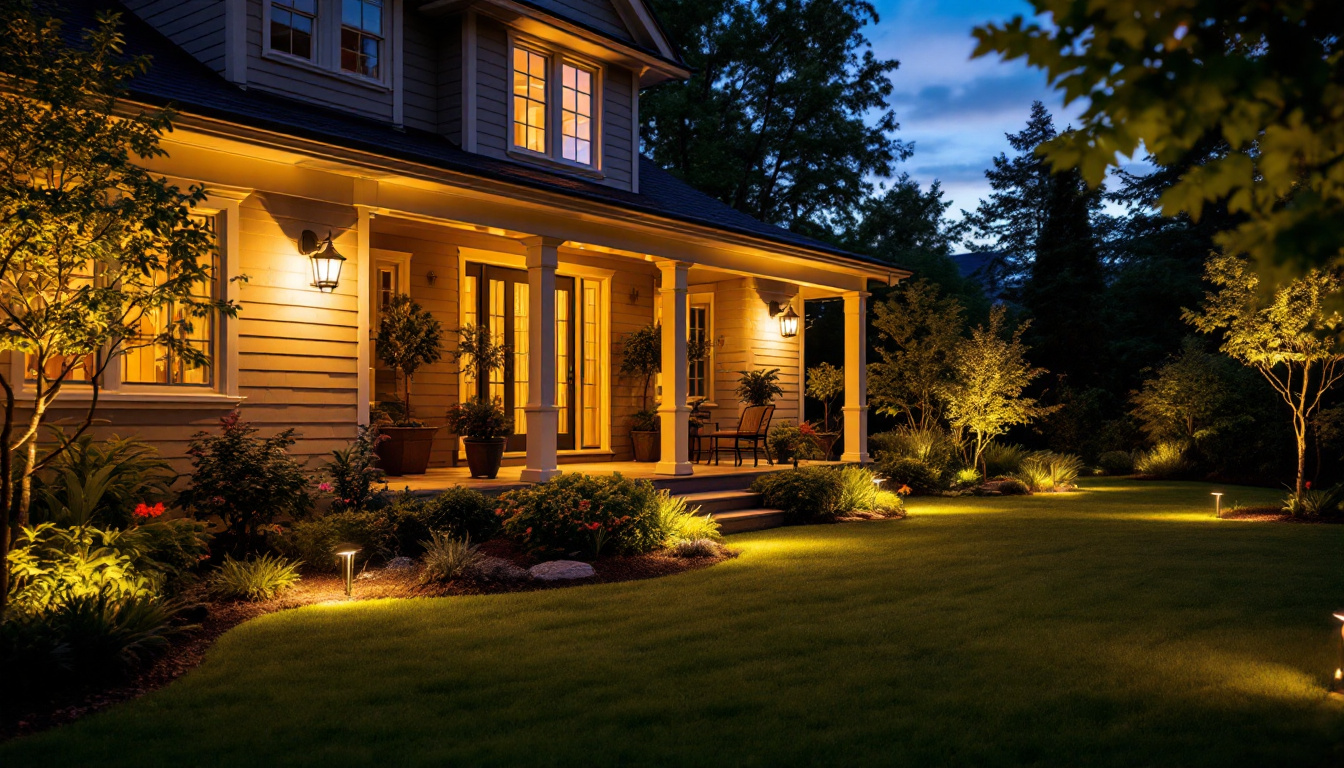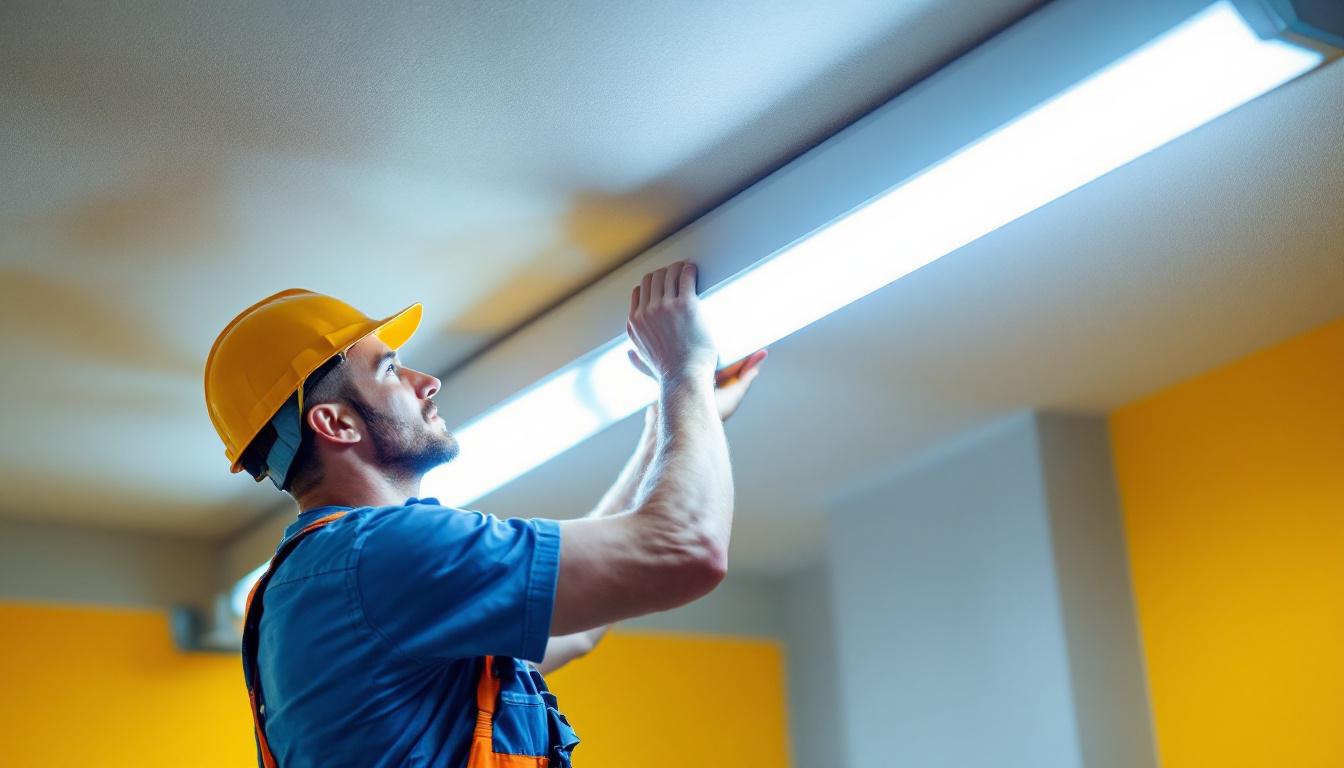
In the world of commercial and industrial lighting, exterior shop lights play a crucial role in ensuring safety, security, and functionality. Whether illuminating a parking lot, a loading dock, or the perimeter of a retail space, selecting the right exterior shop lights can significantly enhance the overall environment. This article delves into the essential aspects of exterior shop lights, providing valuable insights for lighting contractors looking to optimize their lighting designs.
Exterior shop lights are specifically designed to withstand outdoor conditions while providing adequate illumination for various applications. These lights come in different styles, sizes, and technologies, making it essential for contractors to understand their options when selecting the best fixtures for a project. The durability of these lights is paramount, as they must endure elements such as rain, snow, and extreme temperatures, ensuring that they remain functional and effective throughout their lifespan. Additionally, many exterior shop lights are built with weather-resistant materials and finishes, which help prevent rust and corrosion, thereby extending their usability.
There are several types of exterior shop lights available, each suited for different applications. The most common types include flood lights, wall packs, and canopy lights. Flood lights offer broad illumination, making them ideal for large areas such as parking lots. Wall packs are typically mounted on building exteriors, providing focused lighting for entrances and pathways. Canopy lights are designed for overhead installation, commonly found in gas stations and covered walkways. Each type of light has its advantages and disadvantages, depending on the specific requirements of the location. Understanding the unique characteristics of each type can help contractors make informed decisions that enhance safety and visibility. For instance, flood lights can be equipped with motion sensors to improve security, while wall packs can be integrated with smart technology for enhanced control and energy savings.
Moreover, the placement of these lights plays a crucial role in their effectiveness. Properly positioning flood lights can eliminate dark spots in large areas, while strategically placing wall packs can ensure that walkways and entrances are well-lit, promoting safety for pedestrians. Canopy lights, on the other hand, should be installed to minimize glare while maximizing coverage, which is particularly important in areas where vehicles frequently pass through. By considering the layout and design of the space, contractors can optimize the performance of exterior shop lights.
When it comes to exterior shop lights, the choice of lighting technology can greatly impact energy efficiency and performance. The most common technologies include LED, fluorescent, and HID (High-Intensity Discharge) lighting. LED lights are increasingly popular due to their energy efficiency, longevity, and low maintenance requirements. Fluorescent lights, while less common for outdoor use, can still be found in some applications, offering decent energy savings. HID lights, such as metal halide and high-pressure sodium, are often used for their high output but can consume more energy compared to LEDs. Additionally, the color temperature of the lights can influence visibility and ambiance; for example, cooler color temperatures can enhance visibility in commercial settings, while warmer tones may create a more inviting atmosphere in residential areas.
Contractors should evaluate the specific needs of each project, considering factors such as energy consumption, light output, and maintenance costs, to choose the most appropriate lighting technology. Furthermore, advancements in smart lighting technology are paving the way for more efficient and customizable lighting solutions. Features such as dimming capabilities, remote control, and automated scheduling can significantly enhance the functionality of exterior shop lights, allowing for tailored illumination that meets the dynamic needs of various environments. By staying informed about these innovations, contractors can provide clients with cutting-edge solutions that not only improve safety and visibility but also contribute to energy savings and sustainability efforts.
Choosing the right exterior shop lights involves several considerations that can affect both functionality and aesthetic appeal. Lighting contractors must take into account the specific requirements of the space, local regulations, and the overall design intent.
One of the most critical aspects of exterior shop lighting is ensuring adequate illumination levels. The Illuminating Engineering Society (IES) provides guidelines for recommended foot-candle levels for various applications. For instance, parking lots typically require 1 to 2 foot-candles, while loading docks may need 5 to 10 foot-candles for safe operation.
Contractors should conduct a lighting audit to assess the current illumination levels and determine the necessary adjustments to meet safety standards. Utilizing photometric analysis tools can aid in predicting how different fixtures will perform in a given space, allowing for more precise planning and installation.
With the growing emphasis on sustainability, energy efficiency has become a top priority for many contractors. Selecting LED fixtures not only reduces energy consumption but also minimizes the environmental impact of lighting installations. Additionally, many municipalities offer incentives for using energy-efficient lighting solutions, which can help offset initial costs.
It’s also essential to consider the longevity of the fixtures. LED lights typically last much longer than traditional lighting options, resulting in fewer replacements and reduced waste over time. Contractors should emphasize energy-efficient solutions to clients, highlighting both the environmental benefits and potential cost savings.
Exterior shop lights must be able to withstand various weather conditions, including rain, snow, and extreme temperatures. When selecting fixtures, it’s crucial to look for products with a high Ingress Protection (IP) rating, indicating their resistance to dust and moisture. A rating of IP65 or higher is generally recommended for outdoor applications.
Durability is also a key factor, as exterior lights are often exposed to potential vandalism or accidental damage. Selecting fixtures made from robust materials, such as die-cast aluminum or polycarbonate, can enhance their lifespan and reliability.
Proper installation of exterior shop lights is vital to ensure optimal performance and safety. Following best practices can help contractors achieve a successful lighting project that meets client expectations.
The mounting height and angle of exterior shop lights significantly influence their effectiveness. Generally, flood lights should be mounted at a height of 12 to 20 feet to achieve the best coverage without creating excessive glare. Wall packs, on the other hand, are typically installed at a height of 8 to 10 feet, providing adequate illumination for entrances and walkways.
Adjusting the angle of the fixtures can also enhance lighting distribution. Aiming lights downward can minimize light pollution and ensure that the illumination is directed where it is needed most. Contractors should carefully consider the layout of the space and the intended use to determine the optimal mounting height and angles.
Electrical considerations are crucial during the installation of exterior shop lights. Proper wiring techniques must be followed to ensure safety and compliance with local codes. It is essential to use weatherproof connectors and junction boxes to protect electrical components from moisture and corrosion.
Additionally, contractors should assess the existing electrical infrastructure to determine whether upgrades are necessary. Ensuring that circuits can handle the load of the new fixtures is vital to prevent overloads and potential hazards.
Once the installation is complete, thorough testing of the exterior shop lights is necessary to ensure they function as intended. This includes checking for proper illumination levels, verifying that all fixtures are operational, and ensuring that there are no dark spots that could pose safety risks.
Regular maintenance is also crucial for the longevity of exterior shop lights. This includes cleaning fixtures to remove dirt and debris, inspecting for damage, and replacing bulbs as needed. Establishing a maintenance schedule can help contractors ensure that lighting systems remain effective and safe over time.
The lighting industry is constantly evolving, with new technologies and design trends emerging regularly. Staying informed about these trends can help contractors provide innovative solutions to their clients.
One of the most significant trends in exterior shop lighting is the integration of smart technology. Smart lighting systems allow for remote control and automation, enabling users to adjust brightness levels, set schedules, and even monitor energy usage from their smartphones or computers. This technology not only enhances convenience but also contributes to energy savings.
Furthermore, smart lighting can improve safety by allowing for motion sensors that activate lights when movement is detected, ensuring that areas remain illuminated when needed without wasting energy during off-peak hours.
Another notable trend is the focus on design aesthetics in exterior lighting. Contractors are increasingly tasked with providing lighting solutions that not only serve functional purposes but also enhance the overall look of a space. This has led to the development of decorative fixtures that blend seamlessly with architectural elements.
Incorporating design elements such as color temperature and fixture style can create a cohesive look that aligns with the client’s branding and vision. Lighting contractors should stay updated on design trends to offer clients a range of options that meet both functional and aesthetic needs.
As sustainability continues to gain importance, contractors are increasingly focused on environmentally friendly lighting solutions. This includes using energy-efficient fixtures, incorporating solar-powered lights, and selecting materials that are recyclable or made from sustainable sources.
Contractors can also educate clients on the benefits of environmentally conscious lighting choices, helping them make informed decisions that align with their values and contribute to a more sustainable future.
Exterior shop lights are an essential component of any outdoor lighting design, providing safety, security, and functionality. By understanding the various types of fixtures, lighting technologies, and key considerations for selection and installation, lighting contractors can deliver exceptional results that meet client needs and expectations.
Staying informed about industry trends and advancements will further enhance a contractor’s ability to provide innovative and effective lighting solutions. As the demand for energy-efficient and aesthetically pleasing lighting continues to grow, contractors who prioritize these aspects will be well-positioned to succeed in the competitive lighting market.
Ultimately, the right exterior shop lights can transform a space, ensuring it is safe, inviting, and functional for all who use it.
Ready to elevate your lighting designs with superior exterior shop lights? At LumenWholesale, we provide lighting contractors with the highest quality, spec-grade lighting products at prices that can’t be beaten. Say goodbye to local distributor markups and hello to our extensive selection that meets rigorous industry standards. With LumenWholesale, you get the reliability and performance you need for every project, plus the convenience of free shipping on bulk orders. Don’t compromise on quality or value—choose LumenWholesale for Wholesale Lighting at the Best Value and make your next project shine.

Discover effective strategies for training your team in the latest LED tube lighting technologies.

Discover how outdoor lighting can give contractors a competitive edge in the market.

Discover how lighting contractors can enhance their projects with 2 ft fluorescent lights.

Discover the top lighting stores in Milwaukee, WI, and explore best practices for lighting contractors.